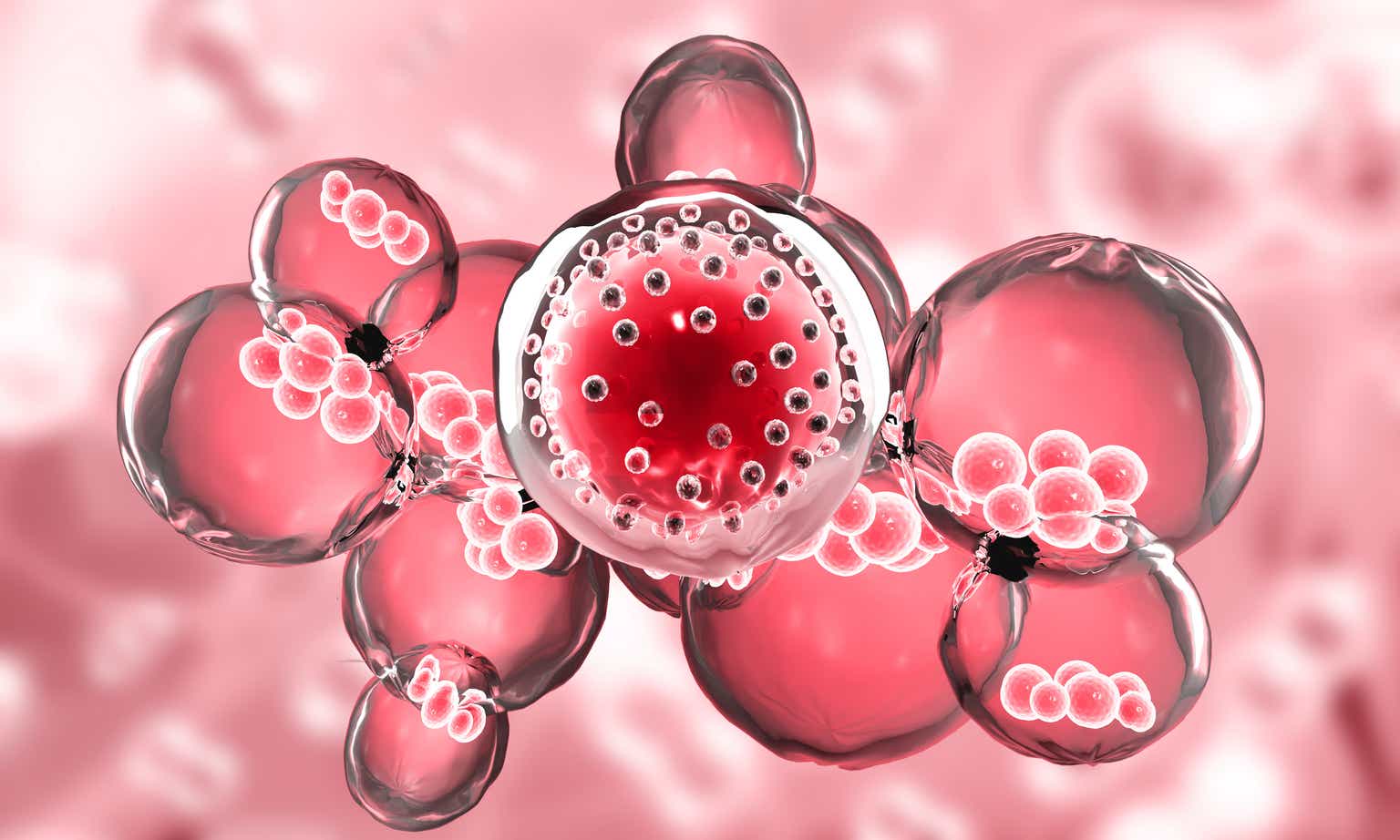Oncolytics Biotech (NASDAQ:ONCY) is a good speculative biotech play to look into. The reason why I state that is because it has been able to establish proof of concept in two large markets. These two markets include the use of its drug pelareorep for the treatment of patients with breast cancer and pancreatic cancer. The use of this drug to treat these two patient populations has established proof of concept in a few studies. However, what makes its drug ideal is that it can be used in combination with other drugs with a tolerable safety profile. Thus, there are two advancement opportunities to look into with respect to this biotech. The first advancement opportunity is with the use of pelareorep in combination with paclitaxel for the treatment of patients with HR+/HER2- metastatic breast cancer.
Then, the second opportunity is the targeting of patients with first-line metastatic pancreatic ductal adenocarcinoma [PDAC] with the use of a combination regimen. Such a combination regimen would be pelareorep + chemotherapies + checkpoint inhibitor. Prior studies showed that this combination achieved improvement in several key endpoints compared to historical controls in other studies. Matter of fact, the phase 3 program targeting first-line metastatic pancreatic cancer patients is moving forward as part of the Precision Promise study program. If all goes well, this phase 3 study is expected to start in early 2024. With proof of concept of pelareorep established in targeting two large market indications, plus advancement of a few late-stage programs, these are the reasons why I believe that Oncolytics Biotech is a good speculative biotech play to look into.
Pelareorep Meshes Very Well With Paclitaxel For Breast Cancer Patients
Oncolytics Biotech is in good shape, because it has established proof-of-concept in being able to use pelareorep in two indications, which are breast cancer and pancreatic cancer. With respect to breast cancer, it has been able to achieve positive results from the phase 2 BRACELET-1 study, where it used pelareorep in a few combinations to treat patients with endocrine-refractory metastatic breast cancer. About 45 patients were randomized 1:1:1 into one of the three following cohorts:
- Paclitaxel monotherapy for Cohort 1
- Pelareorep + paclitaxel for Cohort 2
- Pelareorep + paclitaxel + avelumab [Bavencio] for Cohort 3
The primary endpoint of this study was looking to see overall response rate at week 16 for the patients who were treated with one of these three cohort regimens.
Breast cancer is a type of cancer that forms in the cells of the breasts. Breast cancer occurs in women primarily, but can also occur in men as well. Symptoms observed with breast cancer include the following:
- Change in shape or texture of nipple or breast
- Bloody discharge from nipple
- A lump found in the breast
It is a large market opportunity for sure, because the global breast cancer market size is expected to reach $85.5 billion by 2032. As I stated above, the goal of using the pelareorep + paclitaxel combination is to specifically target advanced breast cancer patients who are both HR-positive and HER2-negative. Is this still a big market opportunity from the market size I stated above? Yes it is, because consider that about 74% of all breast cancer are both HR-positive and HER2-negative. Despite only targeting a specific portion of breast cancer patients, as you can see, it is still a good market opportunity for Oncolytics to go after.
As I stated in the beginning above, I believe the use of pelareorep + paclitaxel is likely going to be advanced into phase 3 clinical testing. An update on the registration pathway for this combination, targeting patients with HR+/HER2- metastatic breast cancer, is expected by the 2nd half of 2023. A good key question that needs to be asked is, why is this program in good shape to be advanced towards phase 3 clinical testing? It is because of the proof-of-concept data that was achieved in the phase 2 BRACELET-1 study. Out of the three cohorts listed above, there was one that did especially well for this patient population, which was the use of pelareorep + paclitaxel. With this specific combination, the primary endpoint was met with a 31.3% overall response rate [ORR]. This, compared to those who took paclitaxel monotherapy, that only achieved a 20% ORR.
Not bad right? Well, what makes pelareorep so good is its mechanism of action, which is that it continues to boost the immune system over time. It replicates viruses within cancer cells and when such cancer cells die they release additional virus particles to infect other nearby cancer cells. Thus, the ability of pelareorep to be able to handle both the innate and adaptive immune system of a patient’s body. This is exactly what was proven over time, whereby the ORR actually improved. Remember the ORR numbers that I showed above? Well, with the pelareorep + paclitaxel combination, the overall response rate [ORR] over time improved to 37.5%. The next step is to see if a phase 3 study confirms the data which has been achieved in this phase 2 BRACELET-1 study.
Financials
According to the 6-K SEC Filing, Oncolytics Biotech had cash, cash equivalents, and marketable securities of $29.7 million as of March 31, 2023. The biotech has been able to fund itself to date by using a U.S. ATM it has in place. During the three months ending March 31, 2023 it sold 2,663,036 common shares of its common stock for gross proceeds of $4.1 million at an average price of $1.54 per share. After deducting commissions, it took in $3.977 million in gross proceeds. It believes that it has enough cash to fund its operations for at least the next 12 months. This means that it will likely need to raise cash again to keep its late-stage programs and pipeline funded. On the flip side, with the ability to run its phase 3 study through the Precision Promise phase 3 study program, it expects to save up to 50% in costs for it. It does have an option remaining though, should it need to raise additional capital in the coming months. On June 16, 2022 it renewed a base shelf prospectus, whereby it can distribute up to $150 million worth of common shares, subscription receipts, warrants or Units [Securities] in either the U.S., Canada or both. Best of all, this renewed Base Shelf that was just achieved will be effective for use until July 16, 2024.
Risks To Business
There are several risks that traders/investors should consider before investing in this biotech. The first risk to consider would be with respect to the eventual initiation of the phase 3 study, which is going to use pelareorep + paclitaxel for the treatment of patients with HR+/HER2- metastatic breast cancer. Even though the phase 2 BRACELET-1 study established proof of concept with respect to the primary endpoint of objective response rate [ORR], it was done so with a low number of patients. The phase 3 study is going to recruit a lot more patients and there is no guarantee that a successful clinical outcome will be achieved with respect to the primary endpoint once it is released.
A second risk to consider would be with respect to the advancement of the phase 3 study using pelareorep + chemotherapies + checkpoint inhibitor, for the treatment of first-line metastatic pancreatic cancer patients. Even though proof of concept in using pelareorep + chemotherapies + checkpoint inhibitor was established in the phase 1/2 GOBLET study targeting first-line metastatic pancreatic cancer patients, there is no guarantee that a similar outcome will be achieved in the phase 3 study Precision Promise program. A final risk to consider would be with respect to the financial position that this company is in. That’s because, as I stated above, it believes that it only has enough cash on hand to fund its operations for at least the next 12 months. Thus, the risk here is that it will likely need to dilute in the coming months, so that it can keep its phase 3 studies and pipeline going.
Conclusion
The final conclusion is that Oncolytics Biotech is a good speculative biotech play to look into. The reason why I state that is because it has been able to establish proof of concept in using pelareorep for two patient populations, which are HR+/HER2- metastatic breast cancer patients and first-line metastatic pancreatic cancer patients. The phase 3 Precision Promise study program is promising, because of the positive results achieved from the phase 1/2 GOBLET study. From this proof-of-concept study, it was shown that first-line metastatic pancreatic cancer patients given pelareorep + Roche (OTCQX:RHHBY) ant-PD-L1 checkpoint inhibitor atezolizumab + chemotherapeutic agents gemcitabine and nab-paclitaxel, had achieved a 69% objective response rate [ORR]. Why is this important? That’s because this ORR is nearly three times greater than what is observed in historical controls, which is an ORR of 25%. With proof of concept of pelareorep established in targeting two large market indications, plus advancement of a few late-stage programs, these are the reasons why I believe that Oncolytics Biotech is a good speculative biotech play to look into.
Editor’s Note: This article discusses one or more securities that do not trade on a major U.S. exchange. Please be aware of the risks associated with these stocks.
Read the full article here




